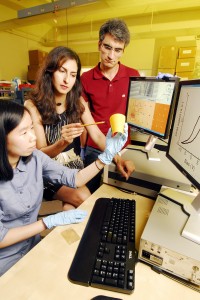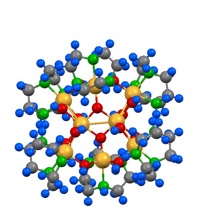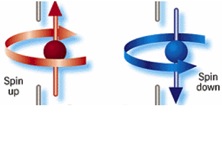I thought I’d pull together some information about science funding and innovation for closer examination. First, in early July 2011 the European Union announced plans for a huge spending increase, approximately 45%, for science. Their current programme, the Seventh Framework Programme (US$79B budget) is coming to an end in 2013 and the next iteration will be called, Horizon 2020 (proposed US$114B budget). Here’s more from Kit Eaton’s July 6, 2011 article on Fast Company,
The proposal still awaits approval by the E.U.’s parliament and member states, but just getting this far is a milestone. The next phase is to forge spending into the next generation of the E.U.’s Framework Programme, which is its main research spending entity, to produce a plan called Horizon 2020. The spending shift has been championed by E.U. research commissioner Márie Geoghan-Quinn, and means that the share of the E.U. budget portioned out for scientific research will eventually double from its 4.5% figure in 2007 to 9% in 2020.
How will Europe pay for it? This is actually the biggest trick being pulled off: More than €4.5 billion would be transferred from the E.U.’s farm subsidies program, the Common Agricultural Policy. This is the enormous pile of cash paid by E.U. authorities to farmers each year to keep them in business, to keep food products rolling off the production line, and to keep fields fallow–as well as to diversify their businesses.
Nature journal also covered the news in a July 5, 2011 article by Colin Macilwane,
Other research advocates say that the proposal — although falling short of the major realignment of funding priorities they had been hoping for — was as good as could be expected in the circumstances. “Given the times we’re in, we couldn’t realistically have hoped for much more,” says Dieter Imboden, president of Eurohorcs, the body representing Europe’s national research agencies.
Geoghegan-Quinn told Nature that the proposal was “a big vote of confidence in science” but also called on researchers to push to get the proposal implemented — especially in their home countries. “The farmers will be out there lobbying, and scientists and researchers need to do the same,” she says.
While the European Union wrangles over a budget that could double their investment in science research, Canadians evince, at best, a mild interest in science research.
The latest Science, Technology and Innovation Council report, State of the Nation 2010: Canada’s Science, Technology and Innovation System, was released in June 2011 and has, so far, occasioned little interest despite an article in the Globe & Mail and a Maclean’s blog posting by Paul Wells. Hopefully, The Black Hole Blog, where Beth Swan and David Kent are writing a series about the report, will be able to stimulate some discussion.
From Beth’s July 12, 2011 posting,
The report – at least the section I’m talking about today – is based on data from the Organisation for Economic Co-operation and Development’s (OECD) Programme for International Student Assessment and Statistics Canada. Some of the interesting points include:
- 15-year-old Canadians rank in the top 10 of OECD countries for math and science in 20091.
- 80% of 15-19 year-old Canadians are pursuing a formal education, which is lower than the OECD average
- But Canada ranks 1st in OECD countries for adults (ages 25–64 years) in terms of the percentage of the population with a post-secondary education (49%)
- The numbers of Canadian students in science and engineering at the undergraduate level increased (18% increase in the number of science undergraduate degrees, 9% increase in the number of engineering undergraduate degrees) in 2008 compared to 2005
…
This all begs the question, though, of what those science-based graduates do once they graduate. It’s something that we’ve talked about a fair bit here on the Black Hole and the STIC report gives us some unhappy data on it. Canada had higher unemployment rates for science-based PhDs (~3-4%) compared to other OECD countries (e.g., in the US, it’s about ~1-1.5%). Specifically, in 2006 Canada had the highest rate of unemployment for the medical sciences -3%- and engineering -4%- and the third highest rate of unemployment for the natural sciences -3%- among the OECD countries: the data are from 2006.
David, in his July 16, 2011 posting, focuses on direct and indirect Canadian federal government Research & Development (R&D) spending,
It appears from a whole host of statistics, reports, etc – that Canada lags in innovation, but what is the government’s role in helping to nurture its advancement. Is it simply to create fertile ground for “the market” to do its work? or is it a more interventionist style of determining what sorts of projects the country needs and investing as such? Perhaps it involves altering the way we train and inspire our young people?
Beth then comments on Canadian business R&D investment, which has always been a low priority according to the material I’ve read, in her July 25, 2011 posting on ,
Taken together, this shows a rather unfavourable trend in Canadian businesses not investing in research & development – i.e, not contributing to innovation. We know from Dave’s last posting that Canada is not very good at contributing direct funds to research and my first posting in this series illustrated that while Canada is pretty good at getting PhDs trained, we are not so good at having jobs for those PhDs once they are done their schooling.
The latest July 27, 2011 posting from David asks the age old question, Why does Canada lag in R&D spending?
Many reports have been written over the past 30 years about Canada and its R&D spending, and they clamour one after the other about Canada’s relative lack of investment into R&D. We’ve been through periods of deep cutbacks and periods of very strong growth, yet one thing remains remarkably consistent – Canada underspends on R&D relative to other countries.
…
The waters around such questions are extremely murky and tangible outcomes are tough to identify and quantify when so many factors are at play. What does seem reasonable though is to ask where this investment gap is filled from in other countries that currently outstrip Canada’s spending – is it public money, private money, foreign money, or domestic money? Hopefully these questions are being asked and answered before we set forth on another 30 year path of poor relative investment.
As I stated in my submission to the federal government’s R&D review panel and noted in my March 15, 2011 posting about the ‘Innovation’ consultation, I think we need to approach the issues in more imaginative ways.


